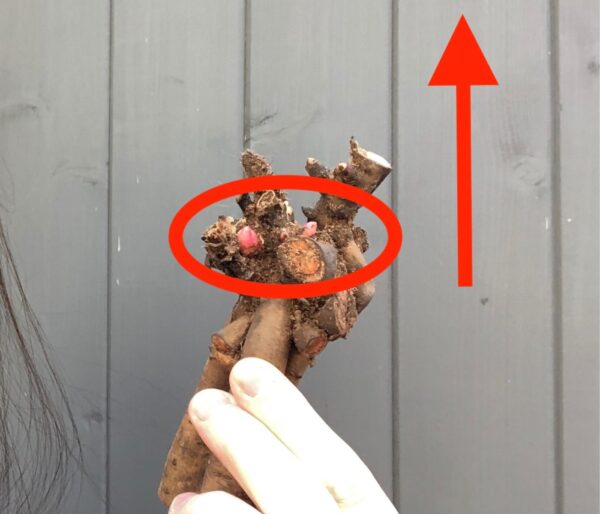Spring and fall are typically the best times to plant hostas. Hostas can be planted in early spring as soon as the soil can be worked. Hostas can also be planted in the summer, but you must take extra care to keep them well-watered. Hostas can also be successfully planted in the fall. Some specialty mail-order nurseries ship their bare root hostas exclusively in autumn for fall planting.
When to plant hostas
Hostas can be planted any time of year as long as the soil is not frozen. They tend to grow best when planted in the spring or fall. Try to get your hosta plants in the ground 6-8 weeks before the hottest days of summer or the first hard frost of winter in your area so that the plants have a bit of time to grow before harsh conditions arrive.
Try to plant hostas in the morning before it gets too hot out. Keep them out of direct sunlight while planting if possible, especially if you’re planting on a bright, hot day. Avoid planting hostas during a heat wave or when the air temperature is below freezing.
Planting hostas in spring
Hostas are plentiful in the spring at garden centers as both potted plants and bare-root plants. They can generally be planted at any point throughout springtime as long as the soil isn’t frozen still.
Hostas are hardy perennials that can be planted outdoors well before the final frost of springtime. Potted hostas from the garden center typically sprout sooner than newly planted bagged bare-root hostas.
Wait until the soil has thawed and can be easily worked. The soil does not need to be warm (although it’s good if it is) but should not be experiencing too many freeze-thaw cycles as these temperature swings can damage small new plants. If you do expect periods of large temperature swings, cover the planting area with a few inches of mulch until the threat of freezing weather has passed.
The best time of year to plant potted hostas is often in mid-spring, just after the first leaves have unfurled. At this point in the year, the soil has warmed up considerably, allowing for root growth, but the harsh hot temperatures of summer are still weeks away. Other plants like trees and large shrubs have also started to leaf out, so you’ll have a good idea which areas of your yard are in partial shade/dappled shade, full shade, or have too much sun for hostas.
Planting hostas in summer
Hostas can be planted in the summer, but you must take extra care to keep them well-watered. Late-planted hostas may not survive if they experience any drought conditions. Keep the soil consistently moist. This is especially important during the first month or two while the plants are establishing their first new roots in the soil and during heat waves and periods of low rainfall when the new plants are susceptible to drying out.
Hostas that are already established in your garden can go a little longer between watering than newly planted hostas. Hostas that have been in the ground for many years are often quite drought-tolerant, provided they received enough water to thrive when they were first planted.

Planting hostas in the fall
Fall is a great time to plant hostas. Potted hostas do well when transplanted in early fall, while bare-root hostas are best planted when dormant in late fall or early spring.
Plant potted hostas in the ground in early fall while the soil is warm but before freezing weather arrives. The warm soil in late summer and early autumn is ideal for root growth, helping the plants stretch out into the soil surrounding the original root ball.
Plant nurseries typically ship bare root hostas in mid-late fall after the plants have become dormant due to cold weather and short days. They can be planted anytime the ground is not frozen. If they arrive after the ground is frozen, plant them inside temporary planters with potting mix and place them in a cool, sheltered area over winter before planting out in early spring.
If you’re looking for specialty hosta cultivars, they may only ship in late fall as bare root divisions. Be sure to have a plan about where to plant them in your yard, and be prepared to plant them as soon as they arrive.
Hosta growing season
Hostas are herbaceous perennials that sprout new leaves from the ground every spring and then die back to their roots in the fall each year. Hostas come back every year as long as the plant is healthy and temperatures do not become too extreme at any point during the year. These plants are generally low-maintenance and easy to grow.
Growing zones for hostas
Most hosta varieties can be grown in Zones 3-9 (check your zone on the USDA map). This means they can be grown in quite a wide variety of climates. Healthy hostas can tolerate winter temperatures as low as -40°F (-40°C) and can survive hot temperatures as high as 100°F (38°C) for short periods during the summer months.
Hostas in cold temperatures
Hostas go dormant during the winter in most climates. The aboveground foliage is only cold-hardy to about 28°F (-2°C), just below freezing. Temperatures at or below this level usually kill the leaves and send the roots into a dormant state for the winter months.
Hostas in hot temperatures
Hostas may also go semi-dormant in the summer in hot climates. Hostas stop actively growing at temperatures above about 95°F (35°C) in mid-summer. The plants usually start growing again following the heat wave, provided the roots have consistent access to water.










